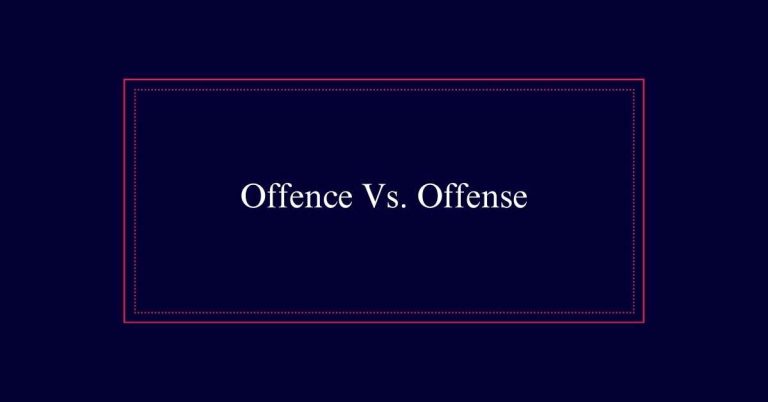Callous: What Does It Mean?
The term ‘callous’ has both physical and emotional connotations. Physically, it refers to toughened, thickened skin formed from repeated friction or pressure. Emotionally, it describes a person who is insensitive, showing a lack of empathy or concern for others’ feelings. This emotional indifference can arise from past traumas or social conditioning. The word differs from ‘callus,’ which specifically means thickened skin. Both words are pronounced [kal-uss], yet they hold distinct meanings.
Definition of Callous
Callous refers to being hardened, either physically with calluses or emotionally with insensitivity. In its noun form, ‘callous’ describes skin that has become toughened due to repeated friction or pressure, commonly seen in manual laborers and musicians.
As a verb, it means to harden or become less sensitive over time. This physical hardening is a natural response to protect the skin. However, ‘callous’ also extends to describe a lack of emotional sensitivity. It denotes a figurative hardening where someone becomes unfeeling or indifferent to others’ suffering.
Over time, repeated exposure to harsh conditions can make a person or thing callous, reflecting a broader, more nuanced understanding of the term’s implications.
Emotional Insensitivity
Essential Emotional insensitivity often manifests as a lack of empathy towards others’ feelings and experiences. Individuals demonstrating this trait may appear indifferent or detached, unable to connect with the emotional states of others. This can lead to strained relationships and misunderstandings.
Emotional insensitivity can result from various factors, such as past trauma, personality disorders, or social conditioning. People with this trait might not recognize or respond appropriately to emotional cues. Their actions may seem cold or uncaring, causing distress to those around them.
Emotional insensitivity can be an significant barrier to effective communication and emotional bonding, impacting both personal and professional relationships. Understanding and addressing this behavior is important for fostering healthy interactions.
Literal Vs. Figurative
Understanding the distinction between literal and figurative uses of ‘callous’ helps in grasping its full meaning and application. Literally, ‘callous’ describes hardened or thickened skin, often from repetitive friction. Figuratively, it refers to emotional insensitivity or showing no empathy. Recognizing these differences can enhance our communication and comprehension.
Here is a comparison to illustrate:
| Context | Literal Use | Figurative Use |
|---|---|---|
| Definition | Hardened or thickened skin | Emotional insensitivity |
| Example | Calloused hands from manual labor | A callous remark |
| Usage | Physical, tangible | Emotional, abstract |
| Origin | Derived from skin hardening | Derived from lack of empathy |
| Application | Medical, physical descriptions | Psychological, social descriptions |
Callous Vs. Callus
Many people confuse the terms ‘callous’ and ‘callus’ due to their similar spelling and pronunciation. However, these words have distinct meanings. ‘Callous’ describes a person who is emotionally insensitive or indifferent. It can also refer to something becoming hardened over time.
In contrast, a ‘callus’ is a thickened area of skin that forms due to repeated friction or pressure. For instance, guitar players often develop calluses on their fingertips from constant strumming.
While both words are pronounced [kal-uss], they are not interchangeable and are used in different contexts. Understanding the difference between ‘callous’ and ‘callus’ is essential for clear communication.

Pronunciation Guide
Despite their different meanings, both ‘callous’ and ‘callus’ are pronounced the same way, [kal-uss]. This pronunciation can cause confusion, but understanding the context will help differentiate between the two. ‘Callous’ describes a lack of sensitivity or emotional hardness, while ‘callus’ refers to a thickened area of skin.
To pronounce [kal-uss], start with a hard ‘k’ sound followed by the short ‘a’ as in ‘cat.’ Then, articulate the ‘l’ clearly before finishing with the ‘uss’ sound, similar to the ending of ‘focus.’
Practicing this pronunciation can ensure clarity in both spoken and written communication. Remember, the pronunciation remains consistent regardless of the meaning or usage of the word.
Usage in Sentences
Knowing the correct pronunciation is important, but seeing how ‘callous’ is used in sentences can deepen our understanding.
For example, ‘The manager’s callous disregard for employee well-being led to widespread dissatisfaction.’ Here, ‘callous’ describes a lack of empathy.
Another instance is, ‘His callous hands were a confirmation of years of hard labor,’ where ‘callous’ denotes hardened skin.
In literature, you might read, ‘Her callous comments hurt more than she realized,’ indicating insensitivity.
Finally, ‘The harsh conditions of the job had calloused his emotions over time’ uses the verb form to show emotional hardening.
These sentences illustrate the various contexts in which ‘callous’ can be effectively employed, enriching our grasp of its meaning.
Real-World Examples
Real-world examples of callousness can be found in various aspects of everyday life, from personal interactions to institutional practices. A manager who disregards the well-being of their employees can appear callous, as can a healthcare system that neglects the needs of its patients. These behaviors often lead to negative outcomes and foster environments lacking empathy.
| Scenario | Description |
|---|---|
| Workplace management | Ignoring employee needs and welfare |
| Healthcare system practices | Neglecting patient care and emotional support |
| Social interactions | Responding indifferently to a friend’s difficulties |
Such instances of callousness highlight the importance of empathy and awareness. Understanding these examples helps illuminate how callous behaviors can affect individuals and communities.
Callous Skin
Callous skin forms due to repeated pressure or friction on specific areas of the body. This condition is common on hands and feet, particularly in individuals engaged in activities that exert pressure on these regions. The skin thickens as a protective response.
Here are some common causes of callous skin:
- Manual Labor: Workers using tools frequently develop callouses on their hands.
- Footwear: Ill-fitting shoes often lead to calloused feet.
- Sports: Athletes, especially runners and weightlifters, may experience callous formation due to repetitive movements.
Calloused skin is generally harmless but can sometimes cause discomfort or pain. Proper care, such as moisturizing and using protective gear, can help manage and prevent callous formation.
Attitudes and Behaviors
Attitudes and behaviors reflect the degree of empathy or insensitivity individuals show towards others. Callous attitudes are marked by a lack of concern for others’ feelings and well-being. This insensitivity can manifest in various ways, such as neglecting someone’s needs or displaying indifference during distressing situations.
Callous behaviors are often characterized by harshness, cruelty, or a disregard for the impact of one’s actions on others. Such behaviors can be harmful, leading to strained relationships and a lack of trust. In extreme cases, callousness can result in emotional or physical harm.
Cultural Perceptions
In many cultures, callousness is viewed as a deeply negative trait that erodes empathy and compassion. Societal norms generally frown upon callous behavior, perceiving it as a sign of emotional detachment and insensitivity. This unfavorable perception is widespread due to several reasons:
- Lack of Empathy: Callous individuals are often seen as unable to understand or share the feelings of others.
- Social Condemnation: Callous actions are frequently condemned in social contexts, leading to isolation.
- Negative Portrayal: Literature and media often depict callous characters as villains, reinforcing negative stereotypes.
Frequently Asked Questions
Can Callousness Develop Over a Lifetime?
Yes, callousness can develop over a lifetime. Repeated exposure to harsh conditions or emotional stress can lead to insensitivity. This emotional hardening often serves as a coping mechanism, making individuals less empathetic over time.
What Professions Might Require a Callous Attitude?
Professions that may require a callous attitude include surgeons, law enforcement officers, and military personnel. These roles often demand emotional detachment to make critical decisions and perform their duties effectively under high-stress situations.
How Do Animals Exhibit Callous Behavior?
Animals exhibit callous behavior primarily through instinctual actions. Examples include predators showing no empathy towards prey, and some species abandoning weaker members. Such behavior guarantees survival and adaptation, but often appears emotionally detached or harsh to humans.
Are There Benefits to Being Callous?
There are potential benefits to being callous, such as emotional resilience and reduced vulnerability in high-stress environments. However, this can come at the cost of empathy and meaningful personal connections, impacting overall social harmony and relationships.
How Can One Overcome Callous Behavior?
To overcome callous behavior, one should practice empathy, actively listen, and engage in self-reflection. Developing emotional intelligence, seeking feedback, and participating in counseling or therapy can also help in becoming more sensitive and compassionate towards others.








